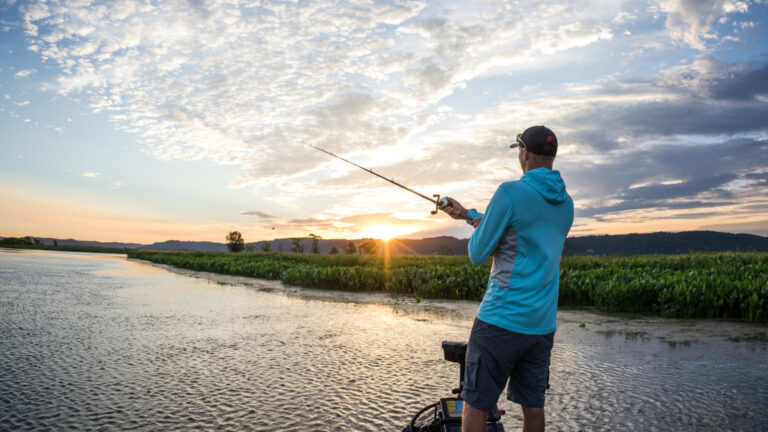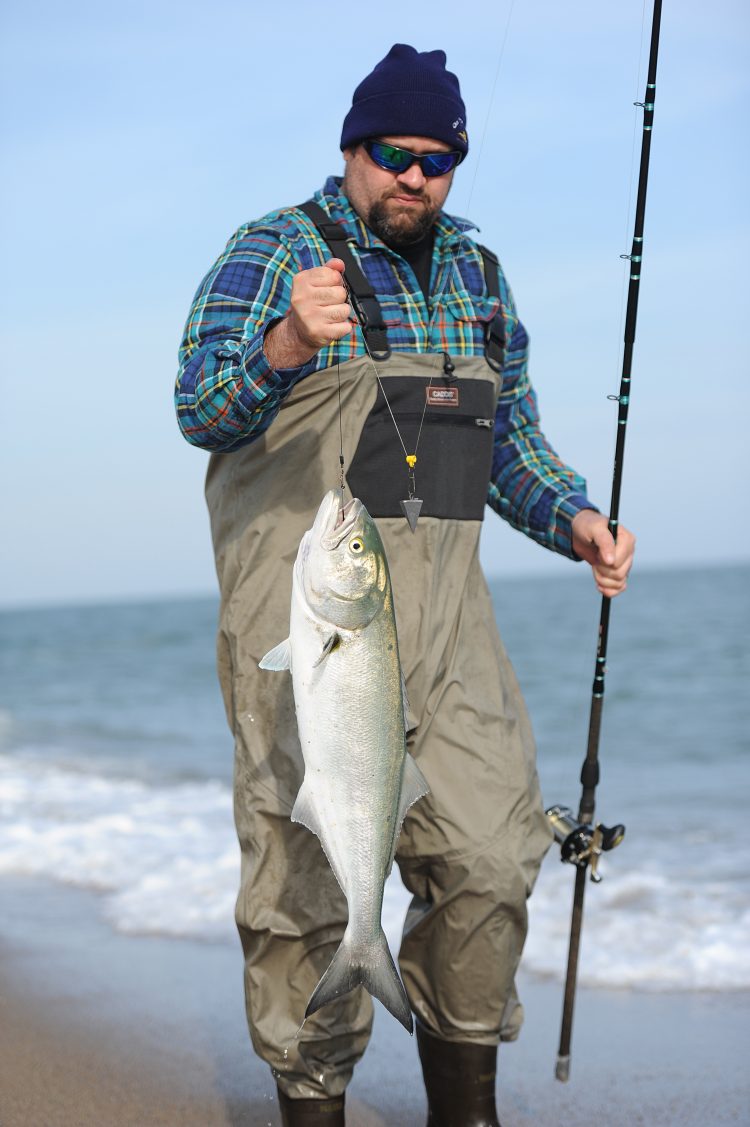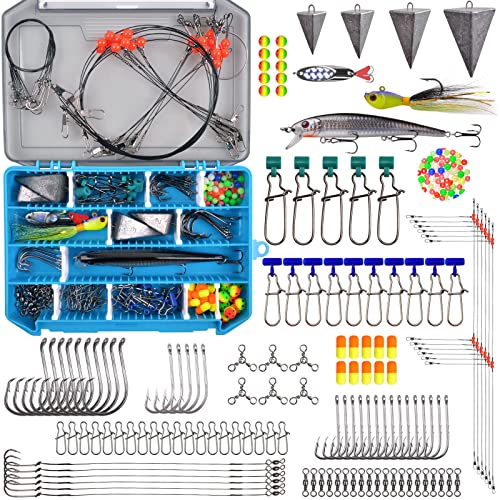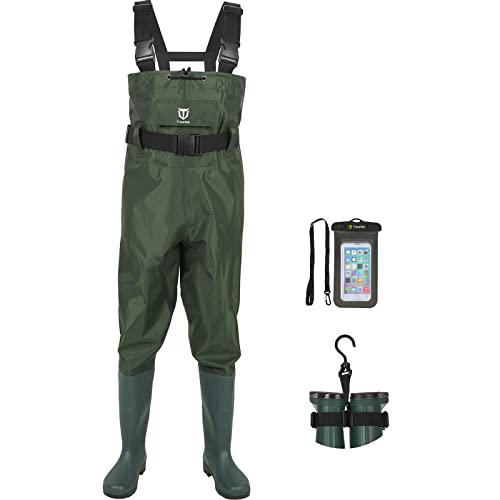In north carolina, you can catch a variety of fish while surf fishing, including red drum, bluefish, flounder, and spotted seatrout. The coastal waters of north carolina offer excellent opportunities for surf fishing enthusiasts.
With its diverse fish population, anglers can expect to catch a range of species, making every fishing trip an exciting adventure. Some of the common fish species targeted in this area include the red drum, known for its strong fight and delicious meat, the bluefish, an aggressive predator that can be found year-round, the flounder, a flatfish known for its tasty white flesh, and the spotted seatrout, a popular game fish with beautiful speckled markings.
Whether you’re a seasoned angler or a beginner, surf fishing in north carolina is sure to offer a memorable and rewarding experience.

Credit: www.ourstate.com
Surf Fishing Basics In North Carolina
North carolina offers plenty of opportunities for surf fishing enthusiasts to test their skills and land some impressive catches. Whether you’re a seasoned angler or a beginner looking to try your hand at surf fishing, it’s essential to understand the basics before heading out to the beach.
In this section, we’ll explore the key factors that contribute to a successful surf fishing trip in north carolina.
Tides, Weather, And Seasons: Understanding The Factors For A Successful Surf Fishing Trip
- Tides:
- Pay attention to the tide schedules as they greatly influence fish behavior and feeding patterns.
- High tides often bring fish closer to the shore, while low tides expose deeper holes where fish may congregate.
- Different species prefer certain tide conditions, so understanding these preferences can increase your chances of a successful catch.
- Weather:
- Keep an eye on the weather forecast before planning your surf fishing trip.
- Overcast or cloudy days can be advantageous as they provide cover for fish, making them more active and likely to bite.
- Calm seas and light wind conditions are ideal for surf fishing, as they make it easier to cast your line and spot fish activity.
- Seasons:
- Different fish species have peak seasons in north carolina, so it’s essential to target the right species during a particular time of year.
- Spring and fall are generally considered the best seasons for surf fishing, with species like red drum, flounder, and striped bass being more abundant.
- Summer brings warm waters and the opportunity to catch species like spanish mackerel and pompano.
Choosing The Right Equipment: Rods, Reels, Lines, And Tackle Tips
- Rods:
- Opt for a sturdy and durable fishing rod specifically designed for surf fishing.
- Longer rods (typically 10-12 feet) provide better casting distance and control when dealing with larger fish.
- Reels:
- Select a spinning reel with a good line capacity and a smooth drag system.
- Look for reels that are corrosion-resistant since saltwater can be harsh on fishing equipment.
- Lines:
- Use braided lines with a higher pound test rating to withstand the strong currents and potential abrasion from rocks or shells.
- Fluorocarbon leaders are recommended to make your line less visible to fish.
- Tackle tips:
- Use pyramid or bank sinkers to keep your bait in place in the current.
- Circle hooks are popular for surf fishing as they reduce the likelihood of gut-hooking fish, making catch and release easier.
Bait And Lures: Exploring The Best Options For Different Fish Species
- Live bait:
- For species like red drum and flounder, live bait such as shrimp, mullet, and sand fleas can be highly effective.
- Spot, finger mullet, and menhaden are popular choices when targeting larger species like striped bass.
- Artificial lures:
- Jigheads paired with soft plastic baits can mimic prey fish and attract strikes from a variety of species.
- Topwater lures are great for enticing aggressive surface feeders like spanish mackerel and bluefish.
Safety Tips: Staying Alert And Knowledgeable For A Safe Fishing Experience
- Be aware of your surroundings and watch out for changing tides, strong currents, and potential rip currents.
- Wear appropriate attire, including footwear with good traction to navigate slippery rocks and shells.
- Stay updated on fishing regulations, licensing requirements, and any special restrictions in certain areas.
- Respect the environment and practice catch and release whenever possible to help preserve fish populations for future generations.
Surf fishing in north carolina offers a diverse range of fish species and exciting angling opportunities. By understanding the tides, weather, and seasons, choosing the right equipment, and utilizing effective bait and lures, you can increase your chances of a successful surf fishing trip.
Remember to prioritize safety by staying alert, knowledgeable, and environmentally conscious throughout your fishing experience. So gear up, cast your line, and get ready for an unforgettable adventure on north carolina’s beautiful surf.
What Can You Catch Surf Fishing In North Carolina?
North carolina is a paradise for surf fishing enthusiasts, offering a diverse range of species that can be caught right from the shore. Whether you’re a seasoned angler or just starting out, the surf in north carolina is teeming with exciting opportunities to reel in some impressive catches.
In this section, we will explore some of the most coveted game fish and provide you with strategies, techniques, and tips to maximize your chances of success. So grab your fishing rod, put on your sunscreen, and let’s dive into the world of surf fishing in north carolina!
Red Drum: Strategies For Hooking This Coveted Game Fish
- Look for areas with submerged structures, such as jetties, piers, or rock formations, as red drum often seek shelter and food near these spots.
- Use fresh bait like cut mullet, shrimp, or blue crab to attract their attention.
- Opt for a medium-heavy fishing rod, as red drum can grow to impressive sizes and put up a strong fight.
- Consider using a fish finder rig or a carolina rig to increase your chances of hooking these elusive game fish.
- Be patient and keep an eye out for signs of activity such as tailing or feeding activity.
Flounder: Techniques For Targeting These Camouflaged Flat Fish
- Look for shallow areas with sandy or muddy bottoms, as flounder often bury themselves to ambush their prey.
- Use live bait such as mud minnows, finger mullet, or shrimp, as flounder are primarily opportunistic feeders.
- Opt for light tackle and a sensitive rod tip, as flounder bites can be subtle and require quick reflexes.
- Consider using a carolina rig or a flounder rig, which allows your bait to stay near the bottom where flounder are usually found.
- Use a slow and steady retrieve to mimic the natural movement of prey and entice flounder to strike.
Bluefish: Tips For Landing The Aggressive Fighters Of The Surf
- Look for schools of baitfish or diving birds, as bluefish often follow these signs of feeding activity.
- Use shiny lures or spoons to attract their attention, as bluefish are known to be aggressive towards fast-moving and flashy presentations.
- Choose a medium to heavy spinning outfit, as bluefish can put up a powerful fight and have sharp teeth.
- Consider using wire leaders to prevent bite-offs, as bluefish have a habit of attacking the line near the lure.
- Use a fast and erratic retrieve to imitate a wounded baitfish, triggering the predatory instincts of bluefish.
Speckled Trout: Understanding Their Habits And How To Reel Them In
- Look for areas with grass beds, oyster bars, or structure along the shore, as speckled trout seek shelter and food in these areas.
- Use live bait such as shrimp, mullet, or finger mullet to entice their interest.
- Opt for lightweight spinning tackle and a fluorocarbon leader, as speckled trout are known for their finicky nature.
- Consider using a popping cork rig or a suspending twitch bait to mimic the movement of injured baitfish.
- Cast near drop-offs or areas with moving water, as speckled trout often ambush their prey in these locations.
Pompano: Unveiling The Secrets To Hooking These Silver Speedsters
- Look for areas with sandbars or cuts in the surf, as pompano often congregate in these locations to feed.
- Use fresh shrimp, sand fleas, or fiddler crabs as bait, as pompano are primarily scavengers.
- Opt for a light to medium spinning outfit with small hooks, as pompano have a small mouth.
- Consider using a double-drop rig or a pompano rig, which allows you to present multiple baits at different depths.
- Use a slow and steady retrieve, keeping your bait near the bottom where pompano are usually found.
Spanish Mackerel: Best Approaches For Catching These High-Speed Swimmers
- Look for schools of baitfish or diving birds, as spanish mackerel often follow these signs of feeding activity.
- Use shiny spoons, jigs, or small plugs to attract their attention, as spanish mackerel are known for their aggressive strikes.
- Choose a medium spinning outfit with a wire leader, as spanish mackerel have sharp teeth that can easily cut through monofilament or fluorocarbon lines.
- Consider using a fast and steady retrieve, imitating the speed and movement of fleeing baitfish.
- Be prepared to cover a significant amount of water, as spanish mackerel are constantly on the move.
Black Drum: Tactics For Landing These Brutes Of The Surf
- Look for areas with sandy bottoms, close to structure like pilings or jetties, as black drum often forage for crabs and shellfish in these areas.
- Use fresh or frozen shrimp as bait, as black drum are primarily bottom-feeders.
- Opt for a medium-heavy spinning outfit with a strong rod and reel, as black drum can grow to impressive sizes and put up a powerful fight.
- Consider using a fish finder rig or a carolina rig, which allows your bait to stay near the bottom and attract black drum.
- Be patient and maintain a tight line, as black drum often exhibit slow and deliberate strikes.
Sheepshead: Tips And Tricks To Catching The Notorious Bait Stealers
- Look for areas with structure such as jetties, piers, or bridge pilings, as sheepshead often seek shelter and feed on barnacles, crabs, and other small crustaceans.
- Use fiddler crabs, clams, or oysters as bait, as sheepshead have strong crushing teeth that are well-suited for their diet.
- Opt for a medium to heavy spinning outfit with a sensitive rod tip, as sheepshead bites can be subtle and require finesse.
- Consider using a carolina rig or a fish finder rig, ensuring that your bait stays near the structure where sheepshead are commonly found.
- Keep a close eye on your line as sheepshead are notorious bait stealers, known for their quick and sneaky bites.
With these strategies, techniques, and tips in your arsenal, you’ll be well-equipped to tackle the exciting world of surf fishing in north carolina. Remember to check local regulations, obtain the necessary permits, and always practice responsible fishing practices. Now, it’s time to gear up, head to the beach, and explore the bountiful opportunities that await you in the surf!
Conservation Practices For Sustainable Surf Fishing
North carolina’s coastline is a paradise for surf fishing enthusiasts, offering a wide range of species and exciting angling opportunities. However, it is crucial to practice sustainable fishing techniques to ensure the long-term health of our fisheries. In this section, we will explore the key conservation practices for sustainable surf fishing, emphasizing the importance of catch and release, proper handling techniques, and adherence to fishing regulations and limits.
Catch And Release: Understanding The Importance Of Maintaining Fish Populations
- Catch and release is a vital practice that promotes the conservation and sustainability of fish populations.
- By releasing fish after catching them, you contribute to the preservation of their numbers, allowing them to reproduce and maintain healthy population levels.
- Here are the key points to understand regarding catch and release:
- Use barbless hooks to minimize injury and facilitate the safe release of fish.
- Handle fish with wet hands or a wet cloth to prevent damage to their protective coating (slime).
- Avoid excessive handling and stress by minimizing the time fish spend out of the water.
- Revive fish by gently moving them forward in the water to ensure they can swim away strong.
Proper Handling Techniques: Minimizing Stress And Damage To The Fish
- Proper handling techniques are essential to minimize stress and prevent damage to the fish during catch and release.
- When fish are mishandled, they may experience injuries that could ultimately lead to their death. Here are some important considerations:
- Avoid touching their gills, as they are fragile and sensitive to damage.
- Support the fish using wet hands or a landing net to prevent them from flopping around and getting injured.
- If you need to measure the fish, use a properly-sized measuring device to minimize handling time.
- Whenever possible, avoid using gaff hooks, as they can cause severe internal damage.
Fishing Regulations And Limits: Knowing The Rules To Protect The Resources
- Adhering to fishing regulations and limits is crucial for maintaining sustainable fishing practices.
- These regulations are put in place to protect fish populations, their habitats, and ensure fair and ethical angling. Here’s why they matter:
- Familiarize yourself with the local fishing regulations, including size limits, bag limits, and closed seasons for specific species.
- Keep up to date with any changes in regulations by checking with local fishing authorities or visiting their websites.
- Respect conservation zones and marine protected areas to preserve essential fish habitats.
- Report any illegal fishing activities or violations to the appropriate authorities to help protect the resources.
By embracing catch and release practices, using proper handling techniques, and adhering to fishing regulations, you are actively contributing to the conservation of north carolina’s marine ecosystems and ensuring the availability of incredible surf fishing opportunities for future generations. So, let’s enjoy the sport while protecting the precious resources that make it possible.
Conclusion
In north carolina, surf fishing offers a wide variety of exciting catches for anglers of all skill levels. From the breathtaking thrill of reeling in a massive bluefish to the delicious satisfaction of cooking up a succulent flounder, the opportunities are endless.
And let’s not forget about the legendary red drum, known for its fierce fight and impressive size. Whether you’re a seasoned angler or a novice looking for a fun-filled day at the beach, north carolina’s coastal waters have something for everyone.
With proper preparation, knowledge of local fishing regulations, and some patience, you can have a rewarding experience and bring home a tasty reward. So pack your gear, head out to the beaches of north carolina, and immerse yourself in the exhilarating world of surf fishing.
The possibilities are truly endless, and the memories will last a lifetime.






